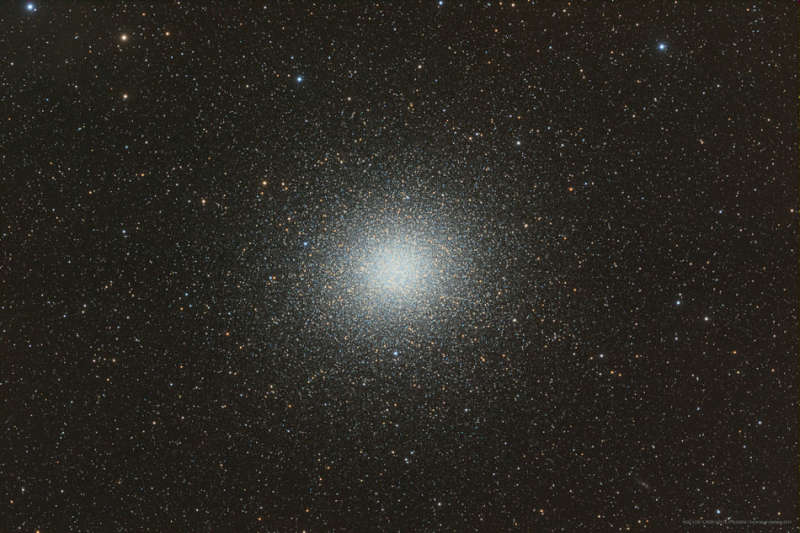Credit & Copyright: CEDIC Team,
Processing - Christoph Kaltseis
Explanation:
Globular star cluster
Omega Centauri,
also known as NGC 5139, is some 15,000 light-years away.
The cluster is packed with about 10 million stars
much older than the Sun within a volume about 150 light-years in diameter,
the largest and brightest of 200 or so known
globular
clusters that roam the
halo of our Milky Way galaxy.
Though most star clusters consist of stars with the same age and
composition, the enigmatic Omega Cen exhibits the presence of
different
stellar populations with a spread of ages and chemical abundances.
In fact,
Omega
Cen may be the remnant core of a small galaxy merging with
the Milky Way.
This astronomically sharp
color image of the classic globular cluster
was recorded in March under Chilean skies from
Hacienda Los Andes.
1999 2000 2001 2002 2003 2004 2005 2006 2007 2008 2009 2010 2011 2012 2013 2014 2015 2016 2017 2018 2019 2020 2021 2022 2023 2024 2025 |
Январь Февраль Март Апрель Май Июнь Июль Август Сентябрь Октябрь Ноябрь Декабрь |
NASA Web Site Statements, Warnings, and Disclaimers
NASA Official: Jay Norris. Specific rights apply.
A service of: LHEA at NASA / GSFC
& Michigan Tech. U.
|
Публикации с ключевыми словами:
Omega Centauri - globular cluster - Шаровое скопление
Публикации со словами: Omega Centauri - globular cluster - Шаровое скопление | |
См. также:
Все публикации на ту же тему >> | |
